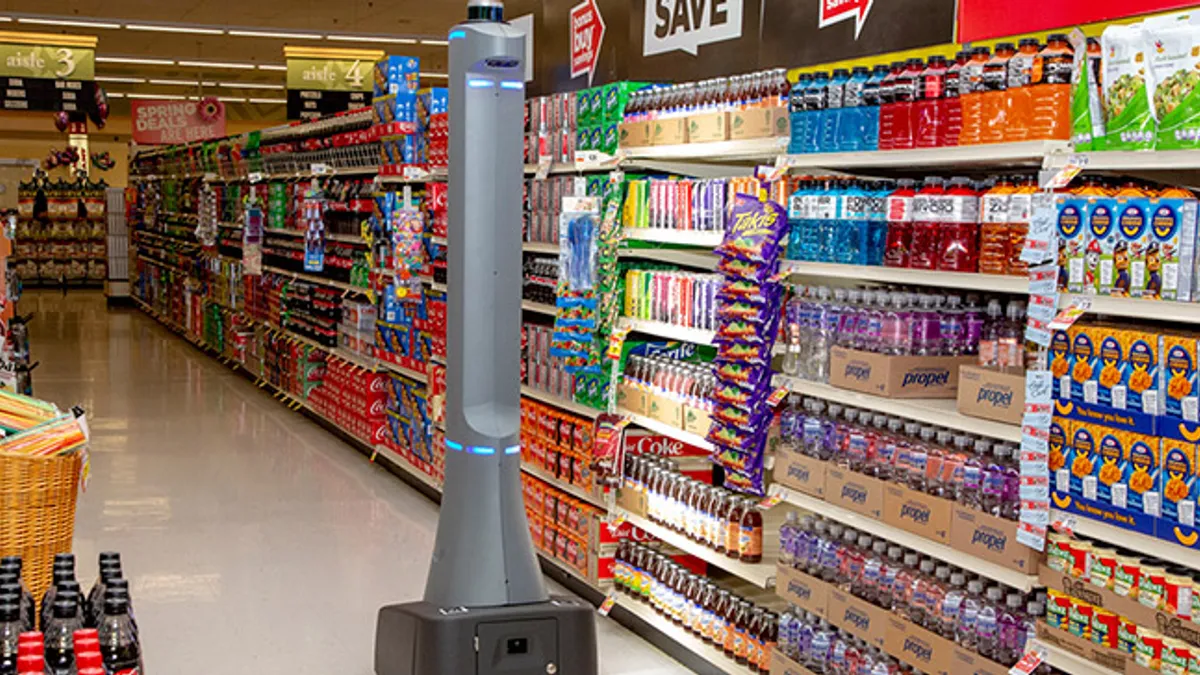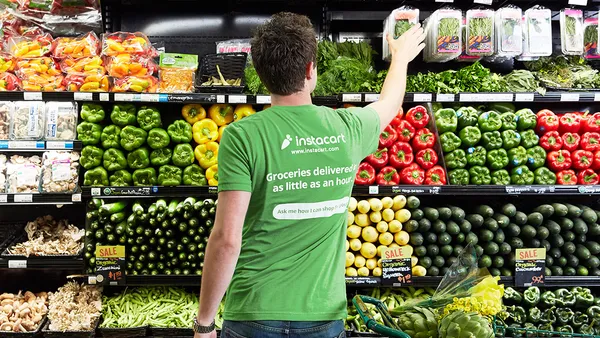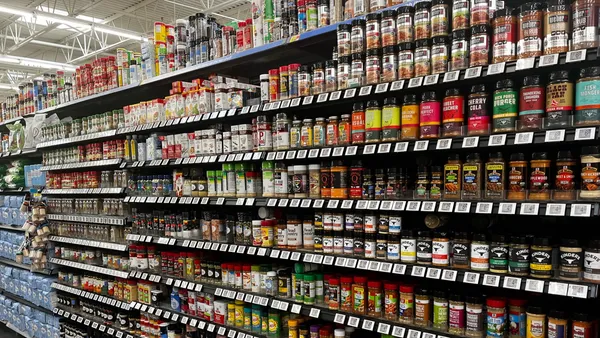As a former district manager for Target, I get almost apoplectic when I read sensationalized stories that try to drum up fervor about robots stealing retail jobs. Despite all the frightening talk of AI replacing the human brain, actual robots, when you get right down to it, are still best at doing the tasks that happen over and over again, ad nauseam. Or, said another way, robots are good at doing the jobs store employees already hate to do or simply don’t have the time to do.
Need examples?
Take monitoring floor spills, auditing price signs, conducting inventory counts, or doing temperature checks, for example. I have done all these jobs. They all are mind-numbing, and the chances that any one of them are done 100% right throughout a store, for the entirety of any given day, are almost zero.
No grocer walks around and looks for spills all day long, but it should. No grocer audits pricing at shelf continuously, but it should. And, no grocer checks for inventory accuracy across its tens of thousands of SKUs repeatedly all day either, but it should do that too!
The cons of not doing so are slips, falls, customer confusion at checkout, inaccurate online pickup orders, inventory shortages, and heaven forbid, play the ominous music: Lawsuits.
Yes, grocers are likely “auditing” these various activities throughout the week but to say that they are doing everything required 100% of the time, calibrated objectively across a workforce, where turnover is insanely high, is ludicrous.
Simply put, robots can’t take away something that isn’t actually happening. So let’s stop with all the robot jingoism.
Grocers should instead forget the scare tactics and frame the discussion to show that robots can be an essential and untapped way to create better customer experiences day over day.
How would I do it?
Well, if I were running a store or a grocery chain, first I would ask questions like:
- What are the jobs you hate?
- What are the jobs we don’t do well as a team?
- What are the jobs you would rather spend your time doing?
Invariably, the answers will come back, on the one hand, as monitoring spills, doing pricing audits, circular sign takedowns, inventory counts, temperature checks, etc., and, on the other, as wanting to spend more time helping and responding to customers.
Next, I would find advocates at the store level, people who understand the intrinsic value of the mundane jobs getting done, but also realize the value of freeing people to do other work. I would ask these advocates to take the lead on introducing robots into stores and task them to treat each robot like a member of the team, to personalize them, and heck, to even give them names and employee badges for fun, as some recent companies have done.
But, I wouldn’t stop there, either. I would also go the extra mile and ask the robotics companies to personalize their robots for my store locations. And once my special robots were in place, I’d look for ways to drive community engagement, perhaps invite local robotics clubs or science classes to come by and check out the latest robots in action.
Who knows, maybe a few Halloween-costume and holiday-sweater contests featuring everyone’s favorite in-store robot would really solidify the point that robots are quickly becoming a welcome addition to the retail environment.
This last point is intentionally ridiculous to illustrate that there’s nothing to stop robots from becoming a fun and value-creating part of a store experience. All it takes is just a little ingenuity, some customized-experience design, and trial and error to make it all happen.
It is that simple.
So, enough with the robot horror stories. It’s scary enough when you come to the realization that it’s going to take a lot of effort to fight mounting grocery competition. Robots may be just what grocers, their employees, and their customers need most.










